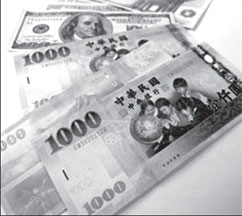Asia's growth hits 6.6% in 2013 - ADB
HONG KONG, China: Rising private consumption and stronger
intraregional trade will spur a pick-up in growth in developing Asia in
2013 and 2014, as economic activity in the US and Europe remains in the
doldrums, the Asian Development Bank (ADB) said in a major new report.
 "The rebound in People's Republic of China (PRC) and solid momentum
in South Eeast Asia are lifting the region's pace after the softer
performance of 2012," said ADB Chief Economist Changyong Rhee. "Domestic
spending, in particular consumption, is the main driver of the recovery,
and is a welcome shift from the reliance on the markets of advanced
economies." "The rebound in People's Republic of China (PRC) and solid momentum
in South Eeast Asia are lifting the region's pace after the softer
performance of 2012," said ADB Chief Economist Changyong Rhee. "Domestic
spending, in particular consumption, is the main driver of the recovery,
and is a welcome shift from the reliance on the markets of advanced
economies."
ADB's flagship annual economic publication, Asian Development Outlook
2013 (ADO 2013), released today, forecasts gross domestic product (GDP)
growth in developing Asia of 6.6% in 2013 and 6.7% in 2014. In 2012, the
region grew 6.1%.
The report warns that political risks linked to wrangling over the US
debt ceiling, fatigue over tough austerity measures in the eurozone, and
long simmering tensions over border disputes in Asia present the main
threats to the near term outlook. It notes that the region's favourable
fiscal position cannot be taken for granted, with improved revenue
efficiency, better governance and other longer-term structural issues
needing to be addressed.
The report projects stronger economic activity to spur renewed price
pressures, with inflation seen moving up from 3.7% in 2012 to 4.0% in
2013 and 4.2% in 2014. These pressures remain manageable for now, but
will need to be monitored closely, especially as strong capital inflows
raise the spectre of potential asset market bubbles.
Across the subregions, East Asia will set the pace with the highest
projected growth of 7.1% in 2013 and the same in 2014. The PRC, the
world's second largest economy, is forecast to expand 8.2% in 2013 on
the back of rising domestic demand and improved exports, with spillover
benefits for neighbouring economies.
Growth will edge back slightly to 8.0% in 2014 as the government
moves to cool pressure on the environment and to address income
inequality.
South Asia will see a turnaround after two years of economic
softening, with growth estimated at 5.7% in 2013 and 6.2% in 2014. India
will lead the upturn, with projected growth of 6.0% and 6.5%, but the
world's second most populous country is still struggling to realise its
full potential, with structural and policy issues inhibiting investment.
South East Asia was the only subregion to see growth accelerate
year-on-year in 2012, led by a recovery in Thailand and strong public
spending in the Philippines. This buoyancy is set to continue on the
back of robust consumption, rising investment and increased
intraregional trade, with GDP growth projected at 5.4% in 2013 and 5.7%
in 2014. The impending commencement of the ASEAN Economic Community in
2015 will enlarge trade volumes within this bloc of dynamic economies,
helping to diversify export markets, the report said.
Higher public spending, particularly in Kazakhstan and Azerbaijan,
will boost Central Asia, with projected growth of 5.5% in 2013 and 6.0%
in 2014. The completion of some major public construction projects,
including a large liquefied natural gas pipeline in Papua New Guinea
(PNG), will see growth in the Pacific cool slightly to 5.2% in 2013.
Growth in the Pacific is expected to bounce back to 5.5% in 2014 as
exports commence from the PNG pipeline and elsewhere in the sub-region
new public construction activity gets under way, including post-cyclone
reconstruction work. A promising pick-up in tourist numbers should also
benefit some smaller Pacific economies. |


